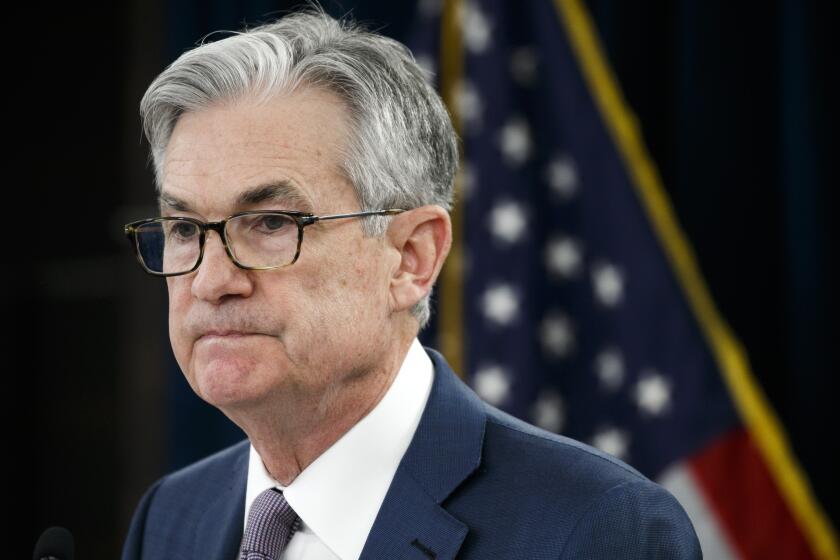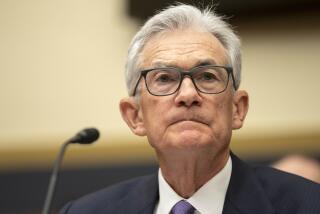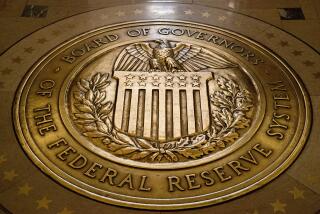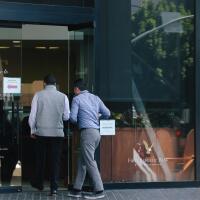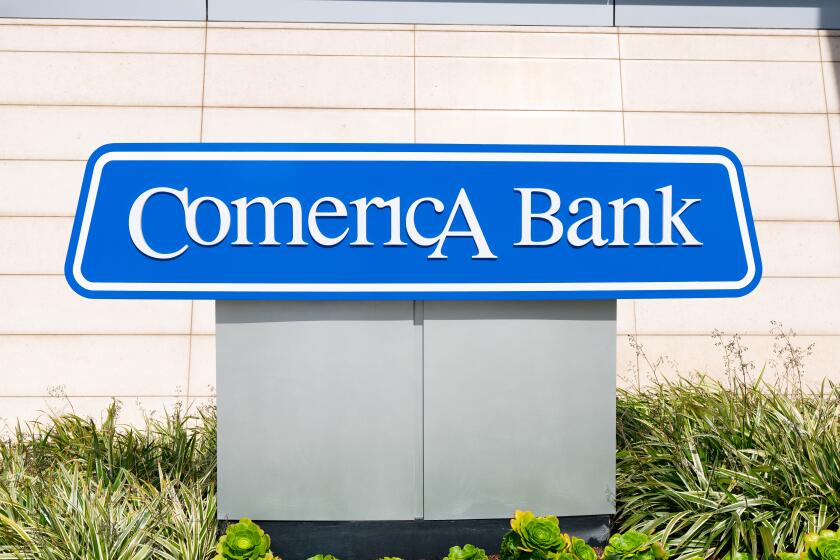Column: The Fed’s anti-inflation work is almost done, with an assist from the banking crisis
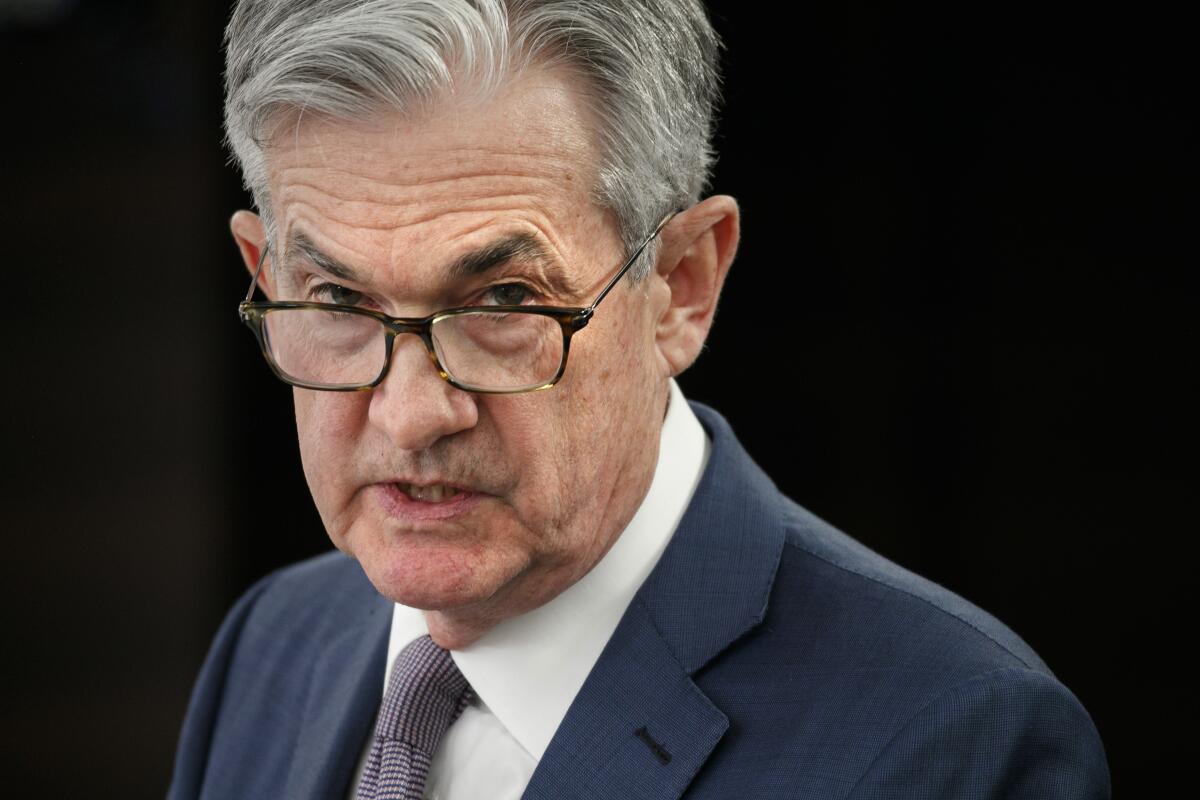
The Federal Reserve Board may owe the banking crisis a thank-you note.
That’s because the economic turmoil created by the collapse of three banks this month and the impairment of a fourth gave it a bit of breathing room in its increasingly unpopular campaign to subdue inflation with a series of sharp interest rate hikes.
The Fed on Wednesday announced a quarter-point increase in its benchmark federal funds rate. That’s its ninth rate increase in a row, totaling 4.75 percentage points in the space of a year — the fastest run of increases since those instituted by then-Fed Chair Paul Volcker over 17 months in 1979-80.
The quarter-point increase was lower than most of the previous hikes in this cycle, which included four consecutive increases of three-quarters of a percentage point from June to November 2022.
The probability of the Fed sticking the landing on this without causing a recession, increasing unemployment and preventing further consolidation in the domestic banking sector would appear to be quite low.
— Joseph Brusuelas, RSM
Long before Wednesday’s meeting of the Fed’s rate-setting open market committee, however, some experts were urging that the central bank pause and take time to assess how the prior rate hikes were affecting inflation and economic growth.
That chorus only grew louder after the failure of Silicon Valley Bank on March 10 and the failures of two more banks over the following days.
Get the latest from Michael Hiltzik
Commentary on economics and more from a Pulitzer Prize winner.
You may occasionally receive promotional content from the Los Angeles Times.
The financial shock delivered by the banking ferment is tantamount to “50 basis points [that is, one half of a percentage point] of policy tightening,” Joseph Brusuelas, chief economist at the consulting firm RSM, wrote Tuesday.
He cautioned that his projection would hold as long as the banking crisis doesn’t get any worse. So far, that seems to be the case. At the moment there are few signs, if any, of broader contagion from Silicon Valley Bank’s implosion.
Stock market investors haven’t been rattled: Although shares in midsize banks have crumbled, the Standard & Poor’s 500 index had gained 2.7% from March 10 through midday Wednesday, before the Fed’s announcement. The VIX “fear” index, a measure of stock market volatility that shoots up when investors grow anxious, has settled at a fairly tranquil range of about 20 to 25.
The banking crisis may well have a negative effect on the broader economy. That’s because as banks grow more cautious about their financial condition, they rein in lending, removing an important lubricant to economic growth.
Fed Chair Jerome H. Powell acknowledged that factor in his news conference immediately after the interest rate announcement. Around the committee table, he told reporters, he heard “a significant number of people saying that they anticipated there would be some tightening of credit conditions, and that would really have the same effects as our policies do.”
Most economic prognosticators expected the Fed to raise rates by no more than a quarter-point Wednesday, if at all. Accordingly, the announcement came as no surprise to traders. The Fed also kept its ultimate rate target at 5.1% through this year.
The Fed missed last year’s inflation spike. Its actions since then have sown havoc in the banking sector and now threaten the whole economy.
Since its latest rate hike brings rates to a range of 4.75% to 5%, that implies that its rate-raising cycle is almost at an end; factor in the anti-inflationary effect of the banking crisis, and it may even have overshot its mark.
“The probability of the Fed sticking the landing on this without causing a recession, increasing unemployment and preventing further consolidation in the domestic banking sector would appear to be quite low,” Brusuelas commented after the announcement.
Fed-watchers, who parse the central bank’s statements as painstakingly as Kremlinologists during the Cold War, observed that in the commentary issued with the announcement the Fed said “some additional policy firming may be appropriate,” a departure from the more hawkish references to the need for “ongoing increases” in policy statements over the last few months.
At his news conference, however, Powell played his customary role of warning that the Fed still sees inflation as running too hot for comfort. He indicated that “price stability” — that is, fighting inflation — remains the Fed’s primary goal.
“Inflation remains too high, and the labor market remains very tight,” he said, implying that the unemployment rate will have to rise from its current 3.6% to 4.5% by the end of this year and 4.6% at the end of 2024. That translates into about 1.5 million Americans losing their jobs.
You can almost set your watch by the stock market’s response to Powell’s comments. On Wednesday, the Dow Jones industrial average soared by about 231 points between its level minutes before the Fed’s announcement until about 45 minutes into Powell’s news conference. Then it dived, closing with a decline of 530.49 points, or 1.6%.
The broader S&P 500 and Nasdaq composite indexes each closed with similar percentage declines.
Fed economic projections point to serious weakness in economic growth this year, with gross domestic product rising by only 0.4%, even weaker than the 0.5% projection the central bank offered in December. Its forecast of growth in 2024 also weakened, to 1.2% from a previous projection of 1.6%.
Despite those projections, Powell dashed hopes of any interest rate easing this year.
Demands by the tech industry’s most vocal libertarians for a government bailout of Silicon Valley call to mind the old saw: The goal in business to privatize profits and socialize losses.
One factor in the Fed’s caution about its interest rate policy is that the banking crisis is still too fresh to draw solid conclusions about how it will affect the economy.
“This is 12 days ago,” Powell said of the Silicon Valley Bank collapse. “We’re trying to assess something that just is so recent that there’s so much uncertainty.”
But the economic data from the first few weeks of the year pointed to “stronger inflation and stronger labor markets,” necessitating a more hawkish interest-rate stance.
Powell was peppered with questions about the Fed’s failure to adequately monitor the health of banks such as Silicon Valley as the interest rate environment changed throughout 2022. That’s certain to be a major theme of investigations of the bank’s failures that will be on legislative agendas in coming months.
He acknowledged that the Fed’s role as the chief regulator of the banking system will come under scrutiny but emphasized that it wasn’t the only player in the crisis.
“At a basic level, Silicon Valley Bank management failed badly,” he said. “They grew the bank very quickly, they exposed the bank to significant liquidity risk and interest rate risk, didn’t hedge that risk.”
It was long evident that the bank “experienced an unprecedentedly rapid and massive bank run” from “a very large group of connected depositors in a very fast run,” Powell said.
He said the Fed would do a review to “identify what went wrong here. ... We will find that, and then make an assessment of what are the right policies to put in place so that it doesn’t happen again, and then implement those policies.”
More to Read
Get the latest from Michael Hiltzik
Commentary on economics and more from a Pulitzer Prize winner.
You may occasionally receive promotional content from the Los Angeles Times.
